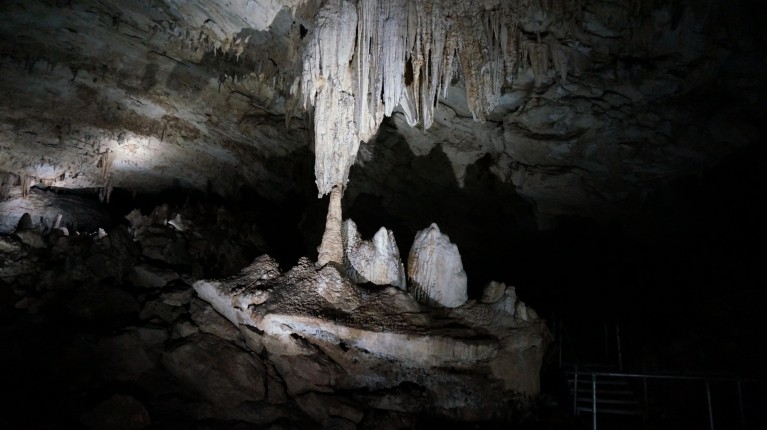
Speleothems (mineral deposits) grow from the cave floor up as water drips down in the Mawmluh cave near Cherrapunji in north east India. Credit: Gayatri Kathayat
India could face frequent protracted droughts lasting at least three years, a new study1by an international research team suggests.
Protracted droughts have been rare in the last 150 years — rainfall oscillating biennially within a narrow range of 10%. But historic evidence indicates “repeated occurrences of protracted droughts during the pre-instrumental period”, the authors say.
Paleoclimatologists, who study ancient climate, gather data from natural recorders of climate variability such as corals, pollen, ice cores, tree rings, lake sediments and similar proxy sources to understand climates before instrumental recording began.
A study led by Gayatri Kathayat, associate professor at Xi’an Jiaotong University, reconstructed Indian summer monsoon droughts over the past millennium by studying oxygen isotopes in speleothems from Mawmluh cave, near Cherrapunji, in northeast India.
Speleothems are mineral deposits that grow in caves. Their oxygen isotopic composition has high dating precision, and a main proxy for reconstruction of past climates. “Our data reveal that protracted droughts frequently occurred in the Indian subcontinent over the past millennium,” the authors say, and that the droughts “were in temporal synchrony with historically documented droughts, famine, mass mortality events, and geopolitical changes in the region.”
该团队表示,其研究结果可以提供帮助reassess the region’s water resources, sustainability and mitigation policies that do not take into account the possibility of protracted droughts. “While our data is not appropriate for improving year-to-year forecasting, it can be used to provide long-range estimates of the likelihood of protracted droughts in the future,” the authors conclude.
“我同意,150年的观察从雨gauges is not enough to predict how the Indian monsoon may change in the future,” says Jayaraman Srinivasan, a scientist at Divecha Centre for Climate Studies at the Indian Institute of Science in Bengaluru.
“Megadroughts in the period from the 16th to the 19th century have been documented in historical records and simulated by some climate models,” he says. “Proxy data from caves are very useful but they indicate rainfall in a local area and may not be representative of the entire country. We need more data to get a fair idea about how Indian monsoon varied the past 1,000 years”.
